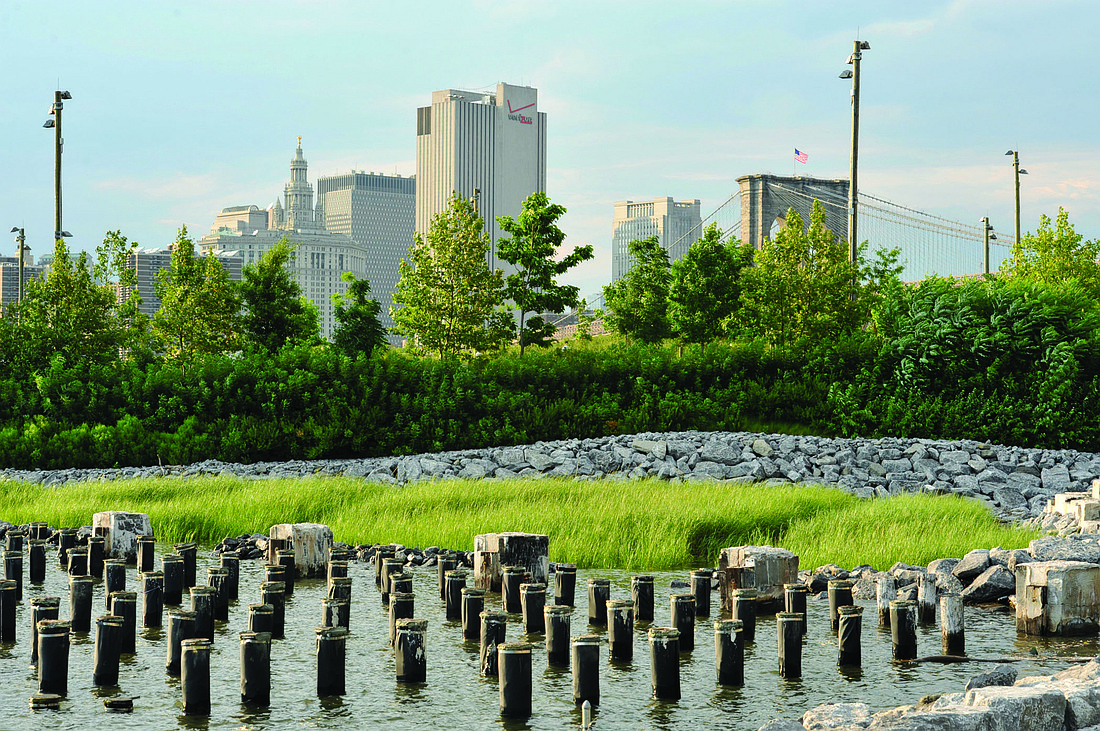- April 24, 2024
-
-
Loading

Loading

To develop a vision and master plan for the bayfront land surrounding the Van Wezel, local organizations are looking to the Brooklyn Bridge for guidance.
Those groups are leading an effort, called Sarasota Bayfront 20:20, to create a project that establishes a cultural and economic legacy for the city along the bayfront while also ensuring public access to the area. The group is focusing on a 75-acre swath of land — some city property, some privately owned parcels such as the former Quay property — near the Van Wezel Performing Arts Hall.
The effort, led by Visit Sarasota County Board of Directors Chairman Michael Klauber, began earlier this year. The group, which includes the Greater Sarasota Chamber of Commerce, the Van Wezel Foundation and the Sarasota Orchestra, received a partial blessing from the City Commission earlier this year.
Commissioners praised the effort, but declined to get city staff involved in the process and told the group to proceed slowly with its work.
On June 5, Visit Sarasota County held a public meeting with members of other involved organizations and a consulting firm the group has contacted for educational purposes. HR&A Advisors is a real estate and economic development consulting group based in New York City. Representatives from Sarasota Bayfront 20:20 met with HR&A in New York last month and brought in two members of HR&A to speak at the June 5 meeting. Klauber said he wanted to learn how other similar public-private park projects came to be.
Candace Damon, the vice chairman of HR&A, discussed other projects on which the consulting group had worked. In particular, she focused on the history of Brooklyn Bridge Park. When the city planned to allow for a residential development along the waterfront near the bridge, a diverse mix of residents and community organizations banded together to oppose the project.
As the group gained political sway and eventually actual authority as the Brooklyn Bridge Park Development Organization, it developed a set of 13 principles to guide the future development of the waterfront. Even though the principles were noncontroversial — representing the overlapping desires of different parties — they became an essential guiding tool as the park began to move from theory to reality.
Damon said it was essential for Sarasota Bayfront 20:20 to define its mission and develop a similar set of vision-guiding principles. Without the principles, Damon said, the Brooklyn Bridge Park would have never come to fruition.
“You always go back to the 13 principles,” Damon said. “Love it or like it, you can always say, ‘This is consistent with the principles,’ or ‘this isn’t.’”
Taking action
Damon said the group needed to form a wider base of support and get more representatives from the community involved in the discussion before it can move on to the principles. Klauber said the group has held roughly 25 meetings with community and neighborhood organizations since March. Going forward, the group will continue to try to broaden its efforts.
Still, those present at the meeting largely agreed on one thing: The city needed to seize the moment. Jim Shirley, president of the Sarasota County Arts and Cultural Alliance, said the land could give the city a much-needed distinct image and identity.
“This could be a project that could take us clearly into my grandchildren’s day and beyond,” Shirley said.
Joe McKenna, president and CEO of the Sarasota Orchestra, raised the stakes: If the city didn’t properly capitalize on the opportunity afforded by the bayfront land, its future was in question.
“If we don’t have a core set of values around this piece of land, what happens to Sarasota in five or 10 years?” McKenna said. “Either you’re alive and vibrant, or you’re atrophying.”
County Commissioner Joe Barbetta said the land was one of the city’s greatest assets and that it was being squandered.
“It’s basic asset-based economic and community development,” Barbetta said. “We’ve got a great asset on the bayfront, and it’s underutilized.”
Commission concerns
Although he was encouraged by the presence at the table at last week’s meeting, Barbetta called attention to one group that was notably lacking representation: the Sarasota City Commission.
“I’m just concerned — this is a great group of really intelligent people, but the decision-makers are not in the room,” Barbetta said. “Those are the people you’ve got to convince.”
The group repeatedly mentioned that winning commission buy-in — and, in the future, the commitment of public funds to develop infrastructure on the land — would be one of its toughest battles. Damon said the group should spend the next six months working on clearly defining its goals and gaining more support from citizens. After it has done that, she suggested the group find a way to publicizes its achievements throughout the community.
“You can have some sort of programming, sponsored by this new organization, that shows it’s capable of bringing all of the districts along,” Damon said.
Klauber is scheduled to update the City Commission next month on Sarasota Bayfront 20:20’s work. Right now, he’s just hoping to receive acknowledgement that the group is still on the right path and perhaps a more whole-hearted commitment from the City Commission. From there, he’ll try to create a project that is satisfying to all involved parties.
“Not everybody is going to get everything they want in something like this, but if everyone is willing to work together, we can all win,” Klauber said.
Contact David Conway at [email protected].